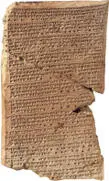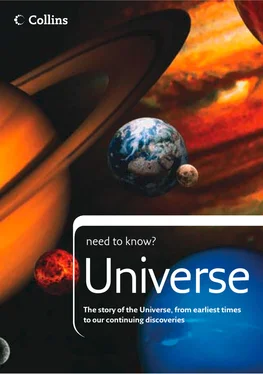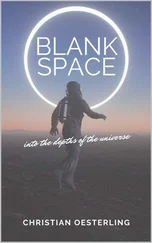 Stellar distances 63
Stellar distances 63
Galactic redshifts 64
Expanding Universe 66
The Big Bang 66
Other sources. . .
 Computer software – some programs give detailed data and images about near and deep space
Computer software – some programs give detailed data and images about near and deep space
 Go observe! Invest in a pair of 7x50 binoculars and begin exploring the skies
Go observe! Invest in a pair of 7x50 binoculars and begin exploring the skies
Weblinks. . .
 Learn about the Solar System www.nineplanets.org Astronomy Picture of the Day – discover the cosmos http://antwrp.gsfc. nasa.gov/apod/astropix.html
Learn about the Solar System www.nineplanets.org Astronomy Picture of the Day – discover the cosmos http://antwrp.gsfc. nasa.gov/apod/astropix.html
NASA’s Imagine the Universe http://imagine.gsfc. nasa.gov
Humans have been watching the Universe for countless millennia. Records of celestial events go back tens of thousands of years. Our attempts to understand the Universe and our place within it have occupied the thoughts of curious folk since the dawn of civilisation. We take a look back at how our ancestors first interpreted what they saw in the skies above them and how that has evolved into the science we now use today.
Our distant ancestors certainly kept a watchful eye on celestial goings-on, for preserved in ancient cave paintings, rock carvings and other human artefacts are indisputable records of a variety of astronomical events.
Patterns of dots thought to be star maps and what appears to be an attempt to populate the heavens with figures representing constellations in the form of animals have been discovered at a number of prehistoric sites in various parts of the world. They show an amazing sophistication of thought in our distant ancestors, proving that they were immensely observant of the world around them and the skies above their heads.

Wonderful scenes like this – brilliant Venus and ruddy Mars in Scorpius, rising over the French Alps – have been witnessed by human eyes for countless millennia.
One of the most familiar symbols to be found is the crescent representing the Moon and markings that indicate the monthly lunar cycle of phases. One such lunar calendar of 29 markings – one for each day of the lunar month – has recently been identified in the caves at Lascaux in France, dated to around 15,000 BC. This symbolism, acknowledging the Moon’s importance, is hardly surprising; the Moon’s light will have been of immense value to any culture without the benefit of streetlights and flashlights, in terms of hunting, nocturnal survival and in primitive religions which attached significance to Moon worship and observing the lunar cycles. What many experts consider to be a depiction of the Moon showing the main features discernable with the unaided eye – the dark patches, known as the ‘maria’ – has been discovered in 5,000-year-old rock carvings in prehistoric tombs at Knowth, County Meath in Ireland.
Tens of thousands of years ago our ancestors believed the skies had a greater purpose than to be simply admired for their splendour. The heavens were considered to have a purpose; those fixed stellar points of light actually meant something. Those bright objects which appeared to move – the Moon, Sun and the five planets – were imagined to have a special significance. So the skies became incorporated into human affairs, and astrology was born. Unexpected changes in the skies – bright comets, eclipses and novae – were considered to be potent warnings or revelations to humanity.
Carved into Irish rock 50 centuries ago, this set of curves found in the Knowth prehistoric tomb in Ireland may represent the oldest map of the Moon.
The notion that the movements of the Sun, Moon and five planets have an influence on the lives of individual people and the course of world events has its roots in ancient concepts and beliefs.
Being able to predict celestial events, from the movements of Venus to eclipses of the Sun and the Moon, appeared to give a great advantage to any society capable of mastering such complex astronomical and mathematical problems. Great civilizations, such as those of ancient Babylon, Egypt and China, attached great importance to observing, recording and predicting heavenly phenomena. Astrologer-priests kept a constant vigil on the skies, ostensibly for society’s well-being and to keep their rulers informed of any celestial portents that might affect the status quo. Astrology was considered such a precious asset that its use without the ruler’s permission was often punishable by execution. Sometimes, either through lack of attention to the skies, sloppy mathematics or just plain bad luck, the astrologers got things wrong – and paid a severe penalty as a result. The ancient Chinese Book of History reports that two court astrologers were executed for having failed to announce a total lunar eclipse in 2136 BC.
Comets were once regarded as celestial omens.
Of course, not everything in the heavens can be predicted. Even these days, bright novae or supernovae (stars which temporarily brighten far beyond their ordinary brightness), bright comets, fireballs (brilliant meteors) or aurorae (displays of the northern/southern lights) often take astronomers by complete surprise. Although such sights can be awesome to behold, we know how these phenomena are caused and realise that, for the most part, they pose no threat to the Earth or its inhabitants. Only a few hundred years ago, things were very different, and a bright comet might have been regarded as an omen of impending change on the Earth – of natural catastrophe, famine, pestilence, war or a change of ruler.
Astrology may look glamorous, but it is as insubstantial as the paper its predictions are written on.
Ancient astrology was practised by making astronomical observations (in an age long before the telescope was invented), so the two subjects of astrology and astronomy were once closely intertwined. Modern forms of astrology, which claim to foretell the destinies of individuals, have often come under close scientific scrutiny, yet have been consistently found to have no provable predictive powers. While many find modern astrology to be entertaining, it has very little basis in science, apart from using certain scientific terms and nomenclature.
Although humans around the world have viewed the same range of celestial phenomena through the ages, our interpretation of them – how they were thought to have been created and what they were believed to have meant – has been immensely varied.

A copy of observations of Venus made in Babylon in 1700 BC is recorded on this clay tablet made at Nineveh in the 7th century BC.
Читать дальше

 Stellar distances 63
Stellar distances 63












